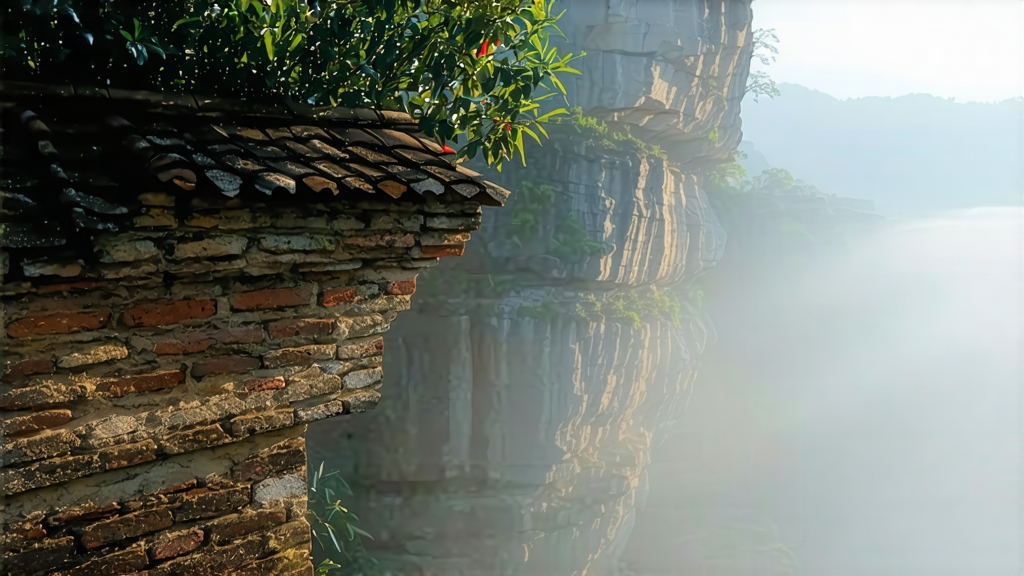
Wuyi Da Hong Pao—literally “Big Red Robe”—is the most storied sub-variety of Chinese oolong, a tea whose very name evokes imperial legend, vertical cliffs, and the mineral whisper of rocks translated into fragrance. To understand it is to step into a 350-year-old saga that mingles myth, geology, craftsmanship, and the subtlest of sensory codes. This essay invites the international reader to walk the narrow plank paths of the Wuyi Mountains, to watch tea leaves dance above lychee-sized charcoal embers, and to taste what Chinese connoisseurs call “rock rhyme,” a texture of flavor that seems to echo stone and stream long after the cup is empty.
-
Myth and documented history
The popular tale recounts how a Ming-dynasty scholar, on his way to the capital for imperial examinations, fell ill at the foot of the Wuyi cliffs. Monks from the nearby Tianxin Temple brewed tea picked from four bushy trees growing out of a cleft in the rock; the scholar was revived, passed the exams, and returned in scarlet official robes to thank the bushes by draping his robe over them—hence the name. While romantic, the first verifiable record of “Da Hong Pao” appears in 1839, in a local gazette that lists it among tribute teas sent to the Qing court. By the early twentieth century the original mother trees—six of them, not four—were already protected, and in 2006 the Chinese government halted all picking from these 350-year-old plants to preserve their genetic legacy. Today every leaf sold as “Da Hong Pao” is either a grafted descendant (called “pure-clone”) or a skillful blend of Wuyi cultivars that seeks to replicate the mother-tree profile. -
Terroir: why cliffs matter
The Wuyi range, a UNESCO World Heritage site in northern Fujian, is a playground of vertical Danxia cliffs, soft purple shale, and mineral-rich runoff that filters through countless fissures. Day-night temperature differentials can exceed 15 °C; fog refracts sunlight into a cool, diffused glow. These conditions force tea bushes—many of them rooted directly into rock crevices—to grow slowly, thickening cell walls and concentrating aromatic precursors. The local vocabulary sums it up in two characters: “yan yun,” literally “rock rhyme,” a tactile finish that feels like licking wet slate, followed by a lingering, hollow sweetness at the back of the throat. No other oolong terroir has inspired such a precise gustatory metaphor. -
Cultivars within the red robe family
Da Hong Pao is not a single botanical cultivar but a stylistic benchmark. Three genetic lines dominate:
• Beidou #1: grafted directly from cuttings of the mother trees, prized for its cold mineral nose and flinty finish.
• Qidan: a separate old strain that yields a darker leaf and a deeper cocoa note, yet still delivers the signature rock rhyme.
• Mixed or “commodity” Da Hong Pao: a master’s blend of 3–5 Wuyi cultivars (often Rou Gui, Shui Xian, and Tie Luo Han) designed to balance fragrance, body, and lingering sweetness at accessible price points. The best blends are vertical works of art, as complex as Champagne cuvées. -
Crafting rock oolong: the eighteen-hour choreography
Harvest takes place in late April, when the third leaf is half the size of the little finger. Pickers pluck the standard “zhong kai mian” (middle-open) standard: one bud plus three or four leaves, because mature leaves are needed to withstand the most aggressive roasting in the oolong universe. The steps that follow must be completed before dawn the next day:
a. Withering in the moonlight—leaves are spread on bamboo racks set outside the cliff-side factory; cool mountain air and infrared radiation from the rocks reduce moisture to 65 %.
b. Yaoqing—“rocking” the leaf—workers toss 5 kg piles into the air every ten minutes for two hours; edges bruise, triggering oxidation enzymes while the leaf center stays green.
c. Shaqing—pan-firing at 280 °C for eight minutes halts oxidation at roughly 40 %, preserving the half-green, half-amber identity.
d. Rolling and strip-shaping under linen cloths breaks cell walls